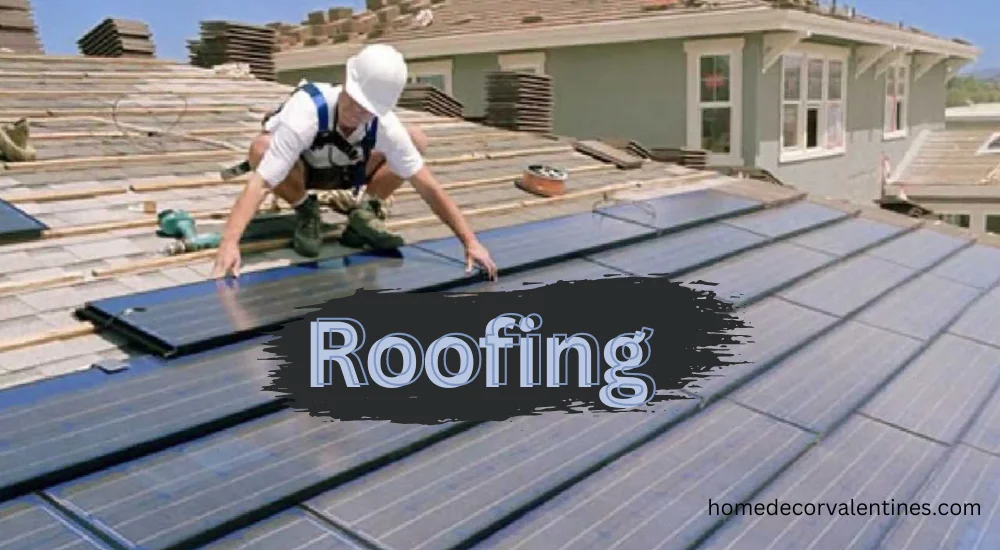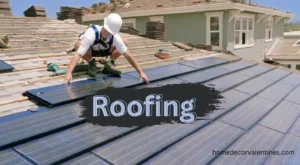DIY Roof Repair: Tips and Tricks for Fixing Common Roofing Issues
Your roof is one of the most crucial parts of your home, standing as the first line of defense against the elements. Knowing how to handle roof repair can save you a lot of money and stress. This article will walk you through everything you need to know about roof repair, from identifying damage to fixing it, and maintaining your roof to prevent future issues.
Understanding Roof Damage
Common Causes of Roof Damage
Roofs endure a lot, from harsh weather conditions like heavy rain, snow, and hail, to physical damage caused by falling branches or debris. Poor installation and lack of maintenance can also contribute to roof deterioration. Understanding the common causes helps you stay ahead of potential problems.
Signs Your Roof Needs Repair
It’s essential to spot the signs of roof damage early to prevent minor issues from becoming major headaches. Look out for missing or cracked shingles, water stains on your ceiling, sagging roof sections, and granules in your gutters. These signs indicate that your roof might need some attention.
Types of Roof Repairs
Shingle Replacement
Shingles protect your roof from water damage. Over time, they can crack, curl, or go missing. Replacing damaged shingles promptly is crucial to prevent leaks and further damage.
Fixing Leaks
Leaks are a common issue and can lead to significant damage if not addressed quickly. Finding the source of the leak and sealing it with appropriate materials can save your home from water damage and mold growth.
Flashing Repairs
Flashing is the material placed around roof features like chimneys and vents to prevent water from seeping in. Damaged flashing can lead to leaks, so repairing or replacing it is vital to maintain your roof’s integrity.
Gutter Maintenance
Gutters play a crucial role in directing water away from your roof. Clogged or damaged gutters can cause water to back up, leading to roof damage. Regular cleaning and maintenance ensure they function correctly.
DIY vs. Professional Roof Repair
Pros and Cons of DIY Roof Repair
Taking a DIY approach to roof repair can save money and give you a sense of accomplishment. However, it requires time, effort, and a good understanding of roofing techniques. Mistakes can lead to more significant problems and even safety hazards.
When to Call a Professional
Some roof repairs are best left to professionals, especially if the damage is extensive or involves structural issues. Professionals have the experience and tools to handle complex repairs safely and effectively.
Roof Repair Costs
Factors Affecting Roof Repair Costs
Several factors influence the cost of roof repairs, including the extent of the damage, the type of roofing material, and the labor rates in your area. Knowing these factors helps you budget effectively for your roof repair needs.
Budgeting for Roof Repairs
Setting aside a budget for roof repairs is a smart move. Regular inspections and maintenance can help minimize unexpected costs by catching problems early before they become more expensive to fix.
Step-by-Step Guide to Roof Repair
Initial Inspection
Before you start any repair, conduct a thorough inspection of your roof. Look for visible damage like missing shingles, cracks, or sagging areas. An initial inspection helps you understand the scope of the work required.
Gathering Tools and Materials
Ensure you have all the necessary tools and materials before starting your repair. This may include a ladder, roofing nails, shingles, a hammer, sealant, and safety gear.
Safety Precautions
Safety should always come first when working on a roof. Wear non-slip shoes, use a stable ladder, and consider using a safety harness to prevent falls.
Repairing Shingles
Start by removing the damaged shingles. Lift the edges of the surrounding shingles and carefully pry out the nails. Replace with new shingles, securing them with roofing nails and sealing the edges.
Sealing Leaks
Identify the source of the leak and clean the area thoroughly. Apply roofing sealant generously around the leak area and press a patch over it. Ensure the sealant covers the edges of the patch completely.
Checking and Repairing Flashing
Inspect the flashing around chimneys, vents, and other roof features. If it’s damaged or loose, remove it carefully and replace it with new flashing, sealing it properly to prevent leaks.
Cleaning and Maintaining Gutters
Clean your gutters regularly to prevent clogs that can lead to water damage. Use a scoop to remove debris and flush the gutters with a hose to ensure water flows freely.
Preventative Roof Maintenance
Regular Inspections
Schedule regular roof inspections, at least twice a year. This helps catch small issues before they become major problems, extending the life of your roof.
Keeping Gutters Clean
Regularly clean your gutters to prevent water backup and roof damage. Consider installing gutter guards to minimize debris buildup.
Trimming Overhanging Branches
Trees with branches hanging over your roof can cause damage during storms. Trim these branches regularly to prevent them from falling on your roof.
Ensuring Proper Attic Ventilation
Good attic ventilation prevents heat and moisture buildup, which can damage your roof from the inside. Ensure your attic has proper ventilation to maintain your roof’s health.
Choosing the Right Roofing Materials
Asphalt Shingles
Asphalt shingles are popular due to their affordability and durability. They come in various colors and styles, making them a versatile choice for many homes.
Metal Roofing
Metal roofs are known for their longevity and resistance to harsh weather. They are an excellent investment despite their higher initial cost.
Tile and Slate
Tile and slate roofs are durable and offer a unique aesthetic. However, they are heavier and require a stronger structural support system.
Wood Shakes
Wood shakes provide a natural look and excellent insulation. They require regular maintenance to prevent rot and insect damage.
Seasonal Roof Care Tips
Winter
In winter, remove snow buildup to prevent ice dams, which can cause leaks. Check for damage after heavy snowstorms and repair promptly.
Spring
Spring is an ideal time for a thorough roof inspection. Look for any damage caused by winter weather and make necessary repairs.
Summer
During summer, ensure your roof is well-ventilated to prevent heat damage. Inspect for signs of wear and tear from the sun.
Fall
Clean your gutters in the fall to prepare for winter. Inspect your roof for any damage and make repairs before the cold weather sets in.
How to Extend the Lifespan of Your Roof
Routine Maintenance Tips
Regular maintenance is key to extending your roof’s lifespan. Clean gutters, inspect for damage, and make timely repairs.
Recognizing and Addressing Small Issues Early
Don’t ignore small issues. Addressing them early prevents them from escalating into more significant, costly problems.
Importance of Professional Inspections
Having a professional inspect your roof periodically ensures potential problems are identified and addressed early, saving you money in the long run.
Environmental Impact of Roof Repairs
Eco-friendly Roofing Materials
Choose eco-friendly roofing materials like recycled shingles or metal roofs to reduce your environmental footprint.
Recycling Old Roofing Materials
Dispose of old roofing materials responsibly by recycling them. Many communities have programs for recycling shingles and other roofing materials.
Energy-efficient Roofing Solutions
Consider energy-efficient roofing solutions that reflect more sunlight and keep your home cooler, reducing energy costs.
Roof Repair Safety Tips
Working with Proper Gear
Always use the right safety gear when working on your roof. This includes gloves, non-slip shoes, and safety harnesses.
Avoiding Common Hazards
Be aware of common roofing hazards like loose shingles, slippery surfaces, and electrical lines. Take precautions to avoid accidents.
First Aid for Minor Injuries
Keep a first aid kit handy when working on your roof. Treat minor injuries like cuts and scrapes immediately to prevent infection.
Dealing with Insurance for Roof Repairs
Understanding Your Insurance Policy
Review your homeowner’s insurance policy to understand what roof repairs are covered. Knowing your coverage helps you file a claim if needed.
Filing a Claim
If your roof is damaged, document the damage and contact your insurance company to file a claim. Provide all necessary information and follow their instructions.
Working with Insurance Adjusters
Work closely with insurance adjusters to ensure your claim is processed smoothly. Be prepared to provide evidence of the damage and any repairs needed.
Future-Proofing Your Roof
Advanced Roofing Technologies
Stay updated with advanced roofing technologies that offer better protection and efficiency, such as solar shingles or cool roofs.
Impact-Resistant Materials
Invest in impact-resistant roofing materials that withstand extreme weather conditions, reducing the need for frequent repairs.
Weatherproofing Techniques
Use weatherproofing techniques to protect your roof from the elements. This includes proper sealing, insulation, and ventilation.
FAQs about Roof Repair
How often should I inspect my roof?
It’s recommended to inspect your roof at least twice a year, in the spring and fall. Additionally, check for damage after severe weather events.
What are the most common signs of roof damage?
Common signs include missing or cracked shingles, water stains on ceilings, sagging areas, and granules in gutters.
Can I repair my roof myself?
While minor repairs like replacing a few shingles can be done yourself, extensive damage or structural issues should be handled by a professional.
Conclusion
Maintaining your roof is essential to protect your home and extend the lifespan of your roof. By understanding the types of roof damage, knowing when to DIY or call a professional, and following a routine maintenance schedule, you can keep your roof in top condition. Regular inspections, using quality materials, and staying updated with the latest roofing technologies will ensure your roof remains durable and efficient for years to come.
Share this content:














Post Comment